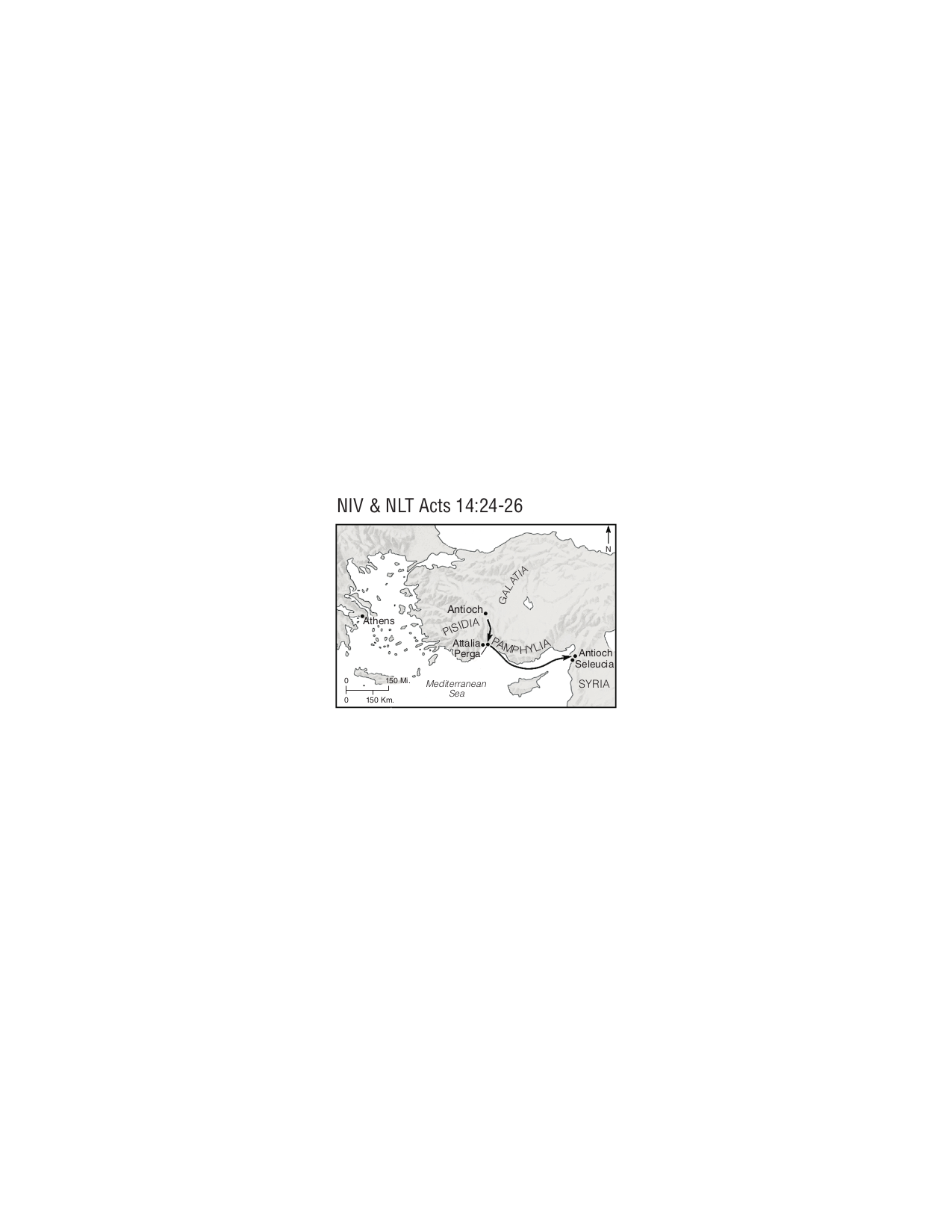
Paul and Barnabas Travel through Pamphylia at the End of the First Missionary Journey
Open Bible Data Home About News OET Key
OET OET-RV OET-LV ULT UST BSB MSB BLB AICNT OEB WEBBE WMBB NET LSV FBV TCNT T4T LEB BBE Moff JPS Wymth ASV DRA YLT Drby RV SLT Wbstr KJB-1769 KJB-1611 Bshps Gnva Cvdl TNT Wycl SR-GNT UHB BrLXX BrTr Related Topics Parallel Interlinear Reference Dictionary Search
A B C D E F G H I J K L M N O P Q R S T U V W XY Z
PAMPHYLIA
Coastal region on the southern shore of Asia Minor (Turkey) stretching 80 miles (128.7 kilometers) from Lycia on the west to Cilicia on the east, and about 20 miles (32.2 kilometers) wide from the seacoast to the Taurus Mountains. Being little more than a narrow coastal plain with an unpleasantly hot and humid climate, this province produced few important cities. This, combined with its general inaccessibility—lying as it did deep at the north end of the bay of Adalia and separated from the rest of inland Asia by a rugged mountain range—made it a haven for pirates. In 102 BC the Roman senate established patrol stations on the coasts of Pamphylia and western Cilicia to police the area, but no effective control was established until 67 BC, when Pompey was given unlimited resources to clean up the Mediterranean.

Paul and Barnabas Travel through Pamphylia at the End of the First Missionary Journey
There was evidently a Jewish population in the province because Luke names Pamphylia among 15 countries from which Jews came to Jerusalem to the feast of Pentecost (Acts 2:10). Some have argued that Pamphylia could not have possessed any significant numbers of Christians because it and Lycia are not mentioned in 1 Peter 1:1, which seems to sum up the whole of Asia Minor. That argument is not convincing, however, because the date of the writing of 1 Peter is not known, and if it was written during the period from AD 43 to 74, when Pamphylia was considered a part of Galatia, Pamphylia could have been included in that designation. Peter may also have considered Lycia in the broad designation of Galatia because his introduction mentions only the larger political divisions of Asia Minor. Nevertheless, it must be noted that Paul apparently had little success in the Pamphylian city of Perga, because there is no statement of opposition to him there or of any converts being made. He did not revisit the province on his second journey, even though his plan was to return and visit the Christians in every city where they had preached (Acts 15:36). Perhaps Paul’s separation from Barnabas was the reason for this, and it may be that Barnabas and John Mark visited Pamphylia after Cyprus (vv 37-41).
Pamphylia and the Critics
Some critics have doubted the accuracy of Luke’s designation of Pamphylia as a separate province from Lycia (Acts 27:5) because of an apparent contradiction by the early Roman historian Dio Cassius who stated that Claudius combined Pamphylia and Lycia into one imperial province in AD 43. However, an inscription from Pamphylia establishes that it remained an independent province for a while longer, was eventually connected with Galatia to the north, and finally was united to Lycia about AD 74 by the Roman emperor Vespasian. Therefore, when Paul traveled through the region on his first missionary journey (Acts 13:13; 14:24; 15:38), it is correctly referred to by Luke as Pamphylia.